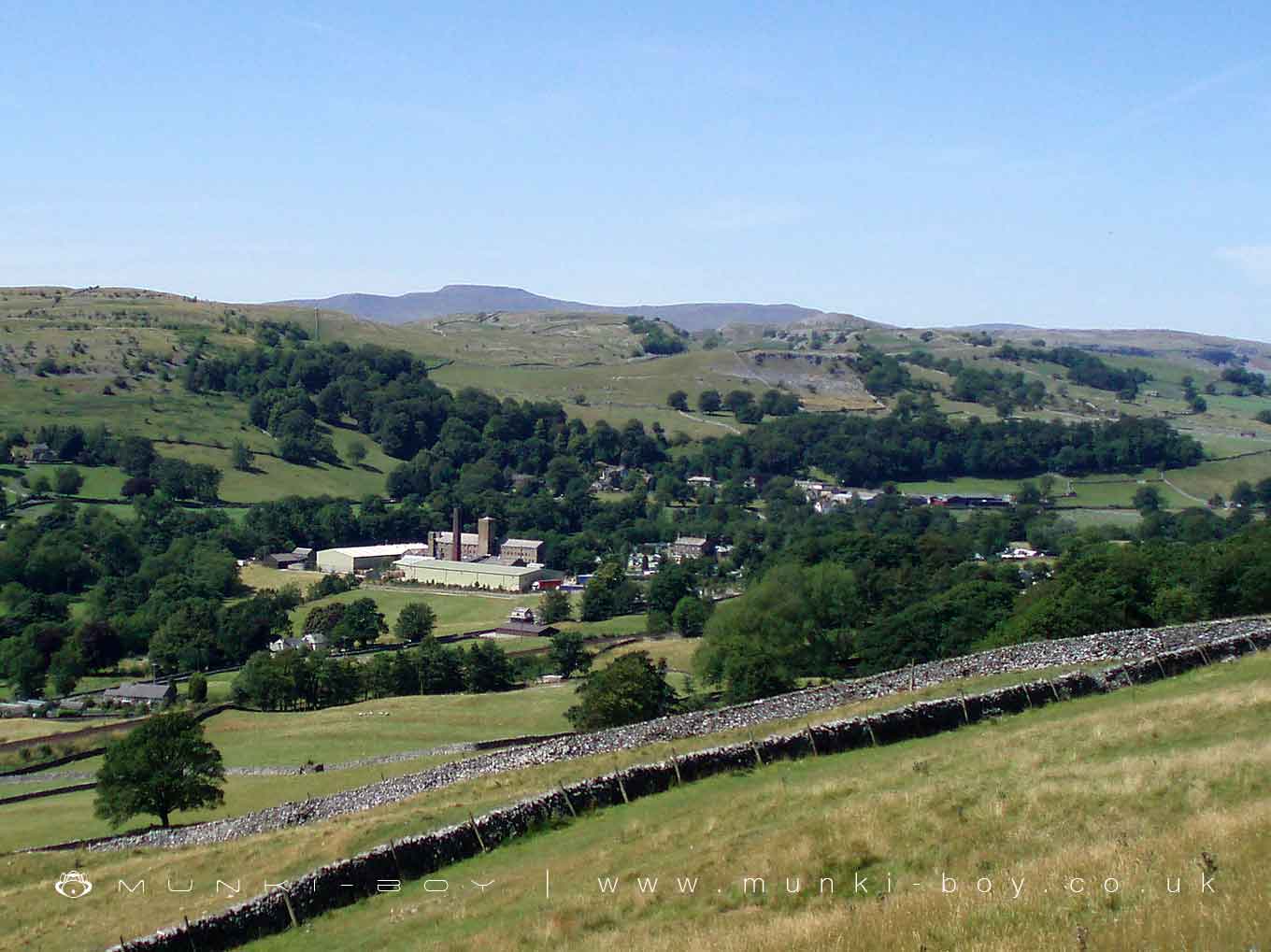
Langcliffe by munki-boy
Langcliffe
Langcliffe is in The Yorkshire Dales National Park in England.
Langcliffe is a small picturesque village in North Yorkshire, in England. Langcliffe is situated north of Settle, east of Giggleswick and lies within the Yorkshire Dales National Park.
Langcliffe village church dates from 1851 and it’s interior contains memorials to the distinguished Dawson family of Langcliffe Hall. The green altar-frontal was made from a dressing gown, that belonged to Lord Halifax - the former Viceroy of India.
Langcliffe High Mill was built in 1783/84. It was one of Yorkshire’s largest and earliest cotton spinning mills. In the early 1800’s the mill was enlarged to accommodate a steam engine to supplement its water power. Watershed Mill was built in 1785. It is a single storey building just downstream from Langcliffe High Mill. It was built by friends of Richard Arkwright to house his new spinning machines. By the 1820’s it was converted into a weaving mill, housing 300 looms. Watershed Mill closed in 1855 and the owners of Langcliffe High Mill then took it over.
Both mills eventually closed in the 1950s. Langcliffe High Mill became a paper mill for a while. It is now used by a packaging company. Watershed Mill is a shopping centre.
Langcliffe High Mill was made a Grade II listed building on 7 April 1977.
On top of Langcliffe Scar, a limestone outcrop, you can find pre-historic circular banked enclosures, cairns and quarries. There was an earlier settlement near to the foot of the scar than it is now, in a field called Pesbers by the lane to Winskill.
One of the local attractions is The Hoffmann Kiln. It was built in 1873 for the Craven Lime Company. Lime burning became a key local industry. The kiln gets it’s name from the German inventor Friedrich Hoffman who patented it in 1858. The Hoffmann Kiln at Langcliffe had 22 chambers. Limestone was continuously burned in a circuit, that took about six weeks to complete. It was a very labour intensive job and provided lots of the local residents with employment.
The lime kiln and quarry closed in 1931, though the kiln was fired up again in 1937, but closed permanently in 1939. The chimney was due to be demolished in 1951, but the day before the demolition, the chimney fell down.
Around one mile to the east of Langcliffe is another local attraction. A large glacial erratic boulder, approximately 8 feet high that rests on small limestone stilts at the edge of a limestone ridge. It is shaped like a giant toe and has been named Samson’s Toe. There is a local legend that says Samson the giant lost his footing when jumping across from Langcliffe Scar or Ribblesdale, breaking off his toe in the process. It is more likely the boulder was deposited into its resting place in the last Ice-Age 12,000–13,000 years ago.
Created: 27 November 2016 Edited: 29 November 2023
Langcliffe
Local History around Langcliffe
There are some historic monuments around including:
Ring cairn on Langcliffe Scar, 800m ESE of Victoria CaveCraven and Murgatroyd lime works 400m north east of Langcliffe MillCairn 340m north of Scar Top GarageUlfkill cross base, Malham MoorCairn 60m north east of Dead Man's CaveSettlement 1/4 mile (400m) W of Leys BarnVictoria Cave, Langcliffe ScarGiggleswick market crossCairn on Stainforth Scar, 180m east of Hawes Close BarnRing cairn north west of Reinsber ScarKinsey Cave, Giggleswick ScarJubilee Cave, Langcliffe Scar.Wildlife in and Around Langcliffe
Mammals found in Langcliffe
There have been 31 species of mammals recorded in the langcliffe area.
| 45 Khz Pipistrelle (Pipistrellus pipistrellus) |
| Badger (Meles meles) |
| Brown Hare (Lepus europaeus) |
| Brown Rat (Rattus norvegicus) |
| Common Shrew (Sorex araneus) |
| American Mink (Neovison vison) |
| Bank Vole (Myodes glareolus) |
| Brown Long-Eared Bat (Plecotus auritus) |
| Chinese Barking Deer (Muntiacus reevesi) |
| Daubenton's Bat (Myotis daubentonii) |
Tap here for more mammals found in and around Langcliffe
Birds found in Langcliffe
There have been 135 species of birds recorded in the langcliffe area.
| Barn Owl (Tyto alba) |
| Black-Headed Gull (Chroicocephalus ridibundus) |
| Blackcap (Sylvia atricapilla) |
| Brambling (Fringilla montifringilla) |
| Buzzard (Buteo buteo) |
| Barnacle Goose (Branta leucopsis) |
| Blackbird (Turdus merula) |
| Blue Tit (Cyanistes caeruleus) |
| Bullfinch (Pyrrhula pyrrhula) |
| Canada Goose (Branta canadensis) |






